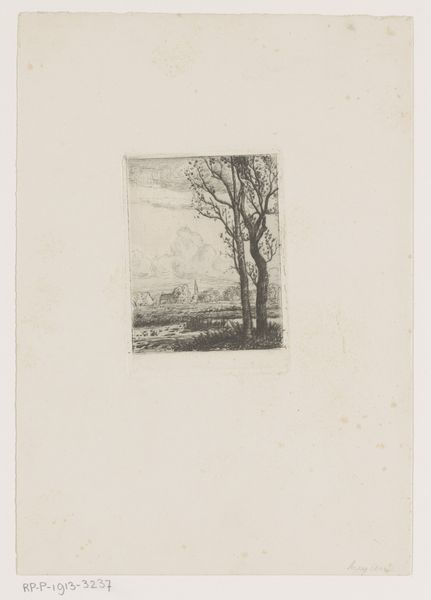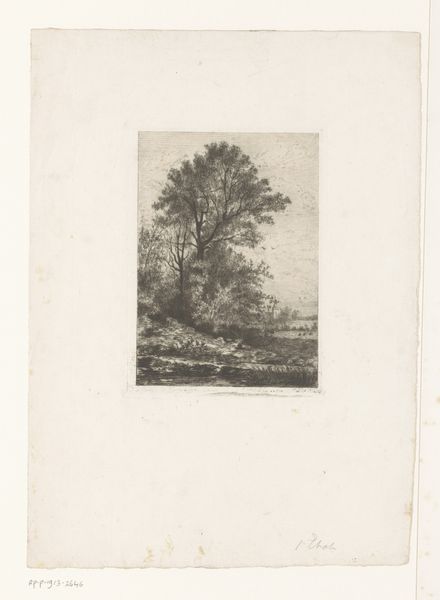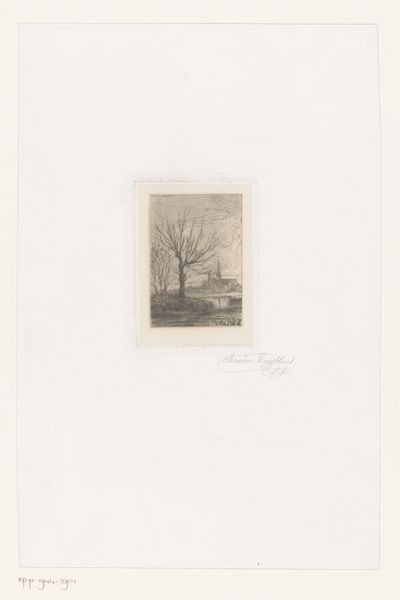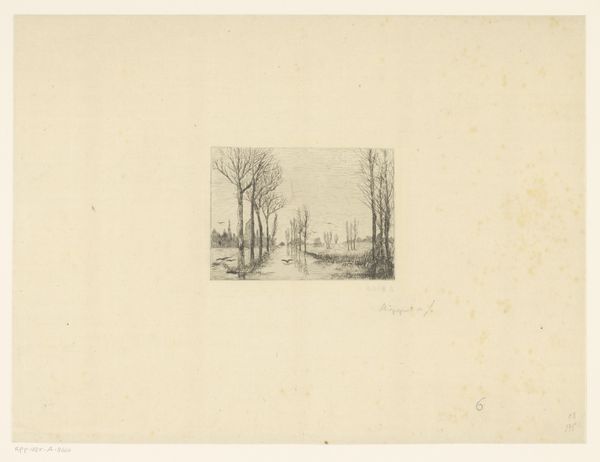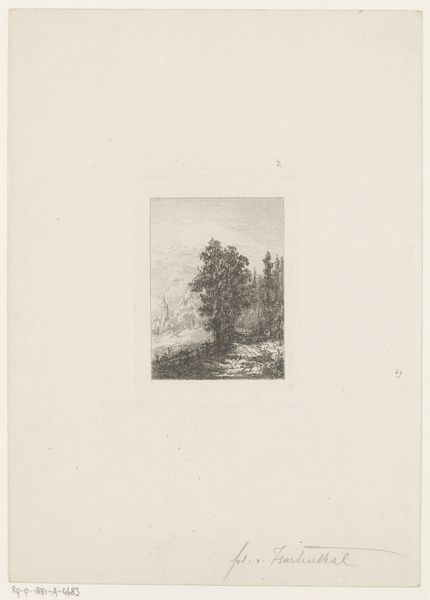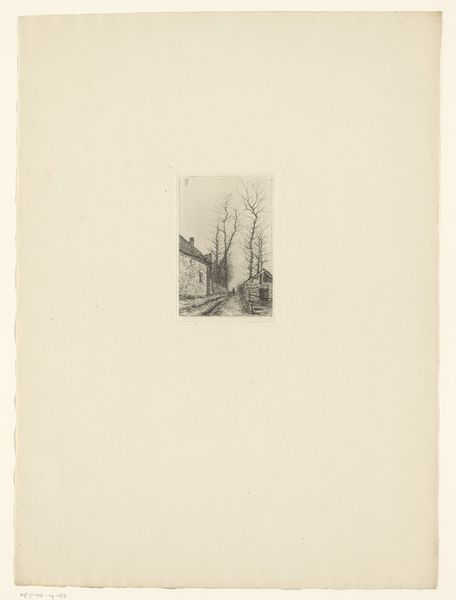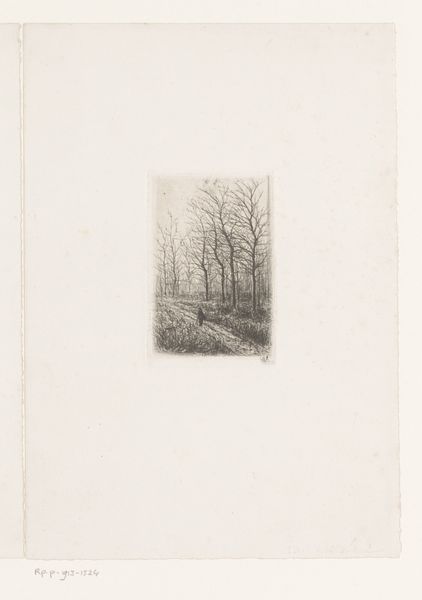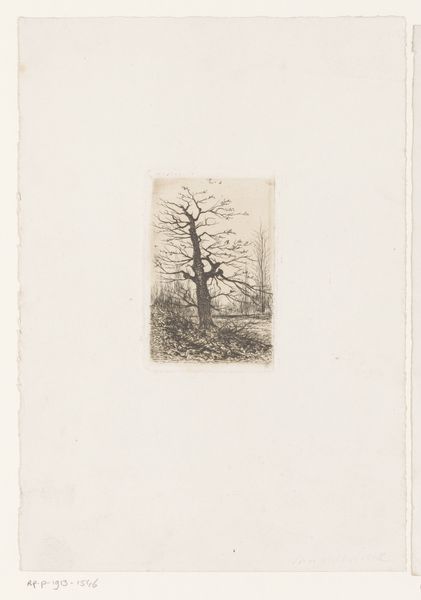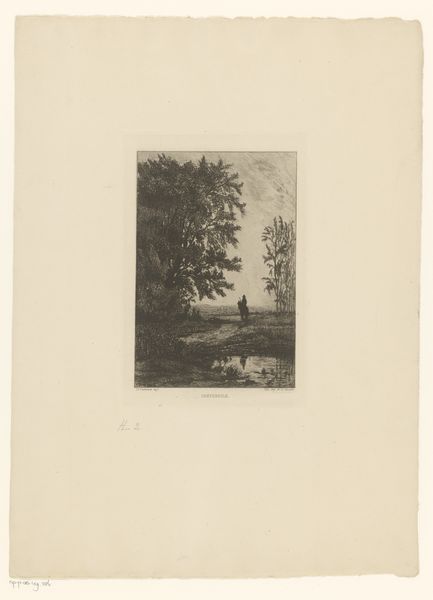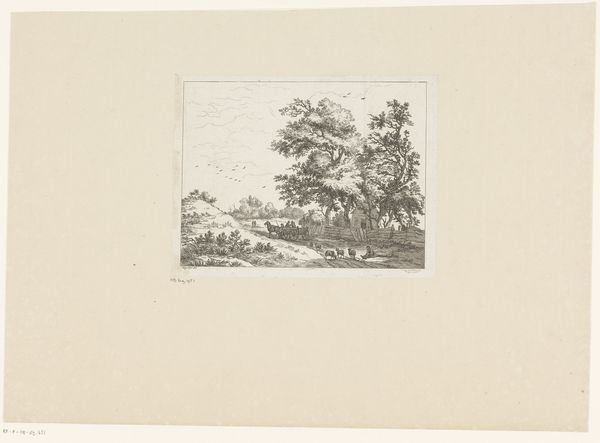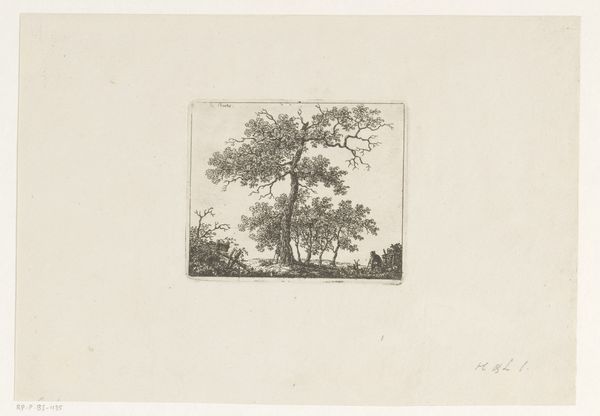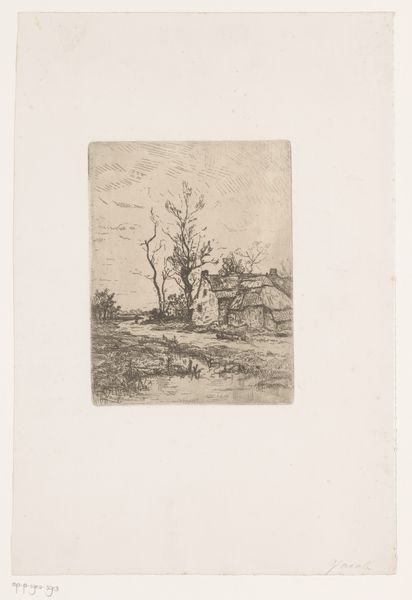
Dimensions: height 138 mm, width 81 mm
Copyright: Rijks Museum: Open Domain
Editor: This is "Winterlandschap met kerk," or "Winter Landscape with Church," an etching from sometime between 1850 and 1900. It's quite small, but very evocative; it has this lonely, stark feeling. What do you see in this piece? Curator: The starkness you mention resonates with the historical and cultural memory of winter as a period of dormancy and reflection. The bare tree is the central motif. What does a tree, stripped bare, communicate to you? Editor: Loss, maybe? The vulnerability of nature laid bare… I suppose it makes the church in the background seem more permanent and solid. Curator: Precisely. Churches, across cultures, represent endurance and communal hope, which contrasts beautifully with the vulnerability of the tree. The etching technique lends itself well to this juxtaposition, doesn't it? The stark lines and monochromatic palette amplify the sense of desolation. Editor: It does, definitely. And I suppose the landscape genre itself, rooted in Romanticism and Realism, emphasizes both the grandeur of nature and humanity’s place within it? Curator: Exactly. How do you think that impacts the way the cityscape emerges here? Is it presented as being in harmony with, or as imposing itself upon, the wintery nature? Editor: That's a good question...it almost seems nestled, partially hidden amongst the elements; maybe in harmony with it, if only tenuously. Curator: I agree. Perhaps it is communicating some optimism or persistence. Even amidst winter's symbolic "death", there remains enduring faith and community. This is more than just an image, but also a cultural statement. Editor: That's really given me a different perspective on the image. Thanks for pointing out all those layers of meaning! Curator: My pleasure. Exploring the layers of symbolism within art is what allows us to connect across time and cultures.
Comments
No comments
Be the first to comment and join the conversation on the ultimate creative platform.
